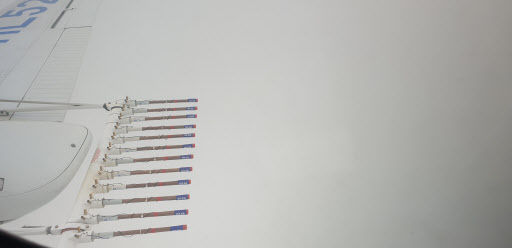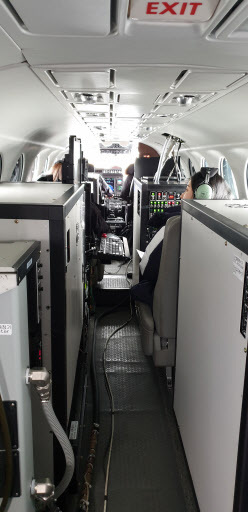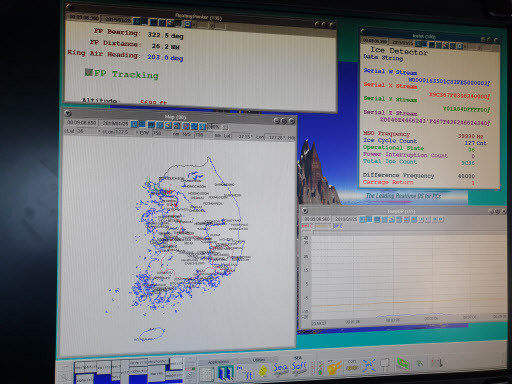Artificial rain experiment over sea ends in failure
By Ock Hyun-juPublished : Jan. 28, 2019 - 15:42
The South Korean government’s first artificial rain experiment this year over the Yellow Sea failed to induce rain, the Korea Meteorological Administration said Monday, with 14 more experiments planned throughout the year.

The KMA observed an increase in the size of precipitation particles in the clouds, but there was no rain or snow, it said, announcing the interim result of the experiment carried out Friday.
The KMA and Ministry of Environment conducted the cloud seeding experiment over the sea about 11 kilometers southwest of Gunsan, North Jeolla Province, to increase precipitation and analyze whether the rainfall, if any, could help reduce fine dust in the air.

For the experiment, they mobilized a plane dedicated to cloud seeding – injecting silver iodide into existing clouds to thicken them and increase the chance of rainfall – to disperse some 3.6 kilograms of the chemical into the air at an altitude of 1.5 kilometers. A boat, mobile vehicles and other devices were also used to observe changes in particles in the clouds.
Precipitation was not observed in Yeonggwang, South Jeolla Province, where the impact of the experiment was expected to be seen, but a weak misty rain phenomenon and rain clouds were spotted, according to the KMA.

The KMA and Environment Ministry are conducting a close analysis of the experiment, involving experts and scientists. They will announce the final result in late February.
Some 14 more artificial rain experiments are planned for this year.
Despite the initial failure, the experiment appears to be the first step in research on artificial rain and its impact on fine dust reduction.
“To secure technology to reduce fine dust through artificial rain, we should continue to conduct research under various circumstances,” said Kim Jong-seok, head of the KMA, vowing to accelerate the practical use of artificial precipitation.
South Korea is still in the early stages of accumulating data on artificial rain experiments.
The government conducted 42 experiments between 2010 and 2017 on inducing rain or snow in inland areas. Six of them were successful. Due to technological limits, however, the increase in precipitation ranged from 0.1 to 1 milliliter per hour on average.
Some 37 countries around the world are carrying out artificial rain experiments in order to resolve droughts, secure water resources, prevent hail or fight air pollution.
The impact of artificial rain on dust reduction or broader weather patterns is not yet known. Some have pointed out that humidity caused by cloud seeding could enlarge dust particles, thereby worsening the pollution. There are also environmental questions over the use of silver iodide.
(laeticia.ock@heraldcorp.com)
-
Articles by Ock Hyun-ju






![[From the Scene] Monks, Buddhists hail return of remains of Buddhas](http://res.heraldm.com/phpwas/restmb_idxmake.php?idx=644&simg=/content/image/2024/04/19/20240419050617_0.jpg&u=20240419175937)








![[From the Scene] Monks, Buddhists hail return of remains of Buddhas](http://res.heraldm.com/phpwas/restmb_idxmake.php?idx=652&simg=/content/image/2024/04/19/20240419050617_0.jpg&u=20240419175937)

![[KH Explains] Hyundai's full hybrid edge to pay off amid slow transition to pure EVs](http://res.heraldm.com/phpwas/restmb_idxmake.php?idx=652&simg=/content/image/2024/04/18/20240418050645_0.jpg&u=20240419100350)

![[Today’s K-pop] Illit drops debut single remix](http://res.heraldm.com/phpwas/restmb_idxmake.php?idx=642&simg=/content/image/2024/04/19/20240419050612_0.jpg&u=)